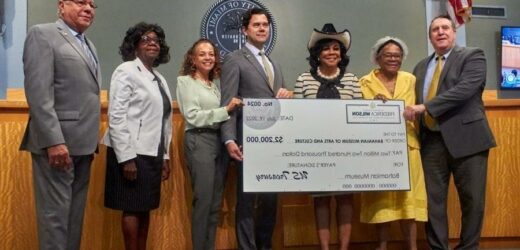A section of Miami’s oldest neighborhood has been formally designated “Little Bahamas of Coconut Grove,” honoring the historically Black enclave established by Bahamians in the nineteenth century, well before Miami was incorporated as a city.
The Miami Herald reports that Miami commissioners voted on Tuesday to designate the area for its cultural and historical significance. It’s the second time the commission has formally named a neighborhood with boundaries by resolution. The city formally established boundaries for the area’s “Little Haiti” in 2016.
The neighborhood’s naming comes amid widespread gentrification, threatening the displacement of longtime residents, including descendants of Bahamian settlers and early pioneers from across the south.
According to the Miami Herald, U.S. Rep. Frederica Wilson, D-Miami, told the commission she was proud to support the resolution introduced by Commissioner Ken Russell. As a Bahamian American, she believes it is critical to recognize the area’s heritage and the descendants of Miami’s pioneers.
“We’re taking a big step towards ensuring the contributions and accomplishments of the Bahamian people are rightfully memorialized,” Wilson said. “Bahamian settlers have played a central role in erecting some of the most treasured landmarks and infusing the area with many historical contributions. And while Miami has always been a thriving city of immigrants, its proud Bahamian cultural heritage and history has lacked the distinction it deserves today,” Wilson added.
Community advocates believe the designation will bring tourism to the area by highlighting the history of the Coconut Grove area.
Dorothy Jenkins Fields, who has worked for decades to preserve Miami’s Black history, says the name “Little Bahamas of Coconut Grove, is a tribute to the heritage of many families who still live in the neighborhood and are descendants of the city’s pioneers.”
“It showcases a cultural heritage of the Bahamian immigrants who helped build Miami, and after arriving in the early 1880s, the Bahamians lived and worked in this area and were the primary labor force throughout Miami and the region for more than 50 years,” Fields said.
Local activist Linda Williams described Bahamian immigrants as an important group among the Black migrants who settled the area, including people from Georgia, South Carolina and other southern states. In addition, Williams urged the city to consider the broader issues confronting the area, particularly the increased development pressure, as well as ensure existing residents can share in the success of the increased tourism anticipated.
As part of a continued effort to highlight and preserve the area’s Bahamian influence, Rep.Wilson has helped secure $2.2 million in federal funds to build a Bahamian Museum of Art and Culture in the community.
Source: Read Full Article


